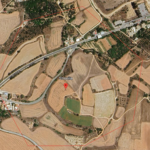Storytelling has always been central to how communities construct, transmit, and reimagine identity. In the Religious Identity Through Story course, we explored how narratives within religious traditions adapt over time to reflect shifting cultural contexts and concerns. This understanding of storytelling as a fluid, living practice—rather than a static record—has profoundly influenced the way I approach my dissertation.
In the context of Strovilia, where historical records are sparse and formal documentation limited, storytelling becomes not just a method but a necessity. The stories shared by former residents are primary sources that preserve Strovilia’s intangible cultural heritage—not just through facts, but through emotion, memory, and sensory experience. These narratives provide insight into how life was once lived in communal spaces like the church, anchoring memory in place, practice, and the senses.
What struck me during the course was how religious storytelling has persisted across centuries, evolving through reinterpretation—sometimes through humour, sometimes through resistance. If storytelling has allowed religious identities to endure, it holds equal potential for cultural heritage in contested or threatened spaces. Much like religious narratives, stories of Strovilia are told and retold, shaped by displacement and longing, yet carrying the weight of belonging and resilience.
By approaching oral histories as living, evolving stories, I aim to document Strovilia’s cultural memory in a way that reflects its human complexity. Storytelling allows me to move beyond documentation as preservation and toward storytelling as cultural activation—a tool not only for remembering but for sustaining heritage across generations.
C.C.


